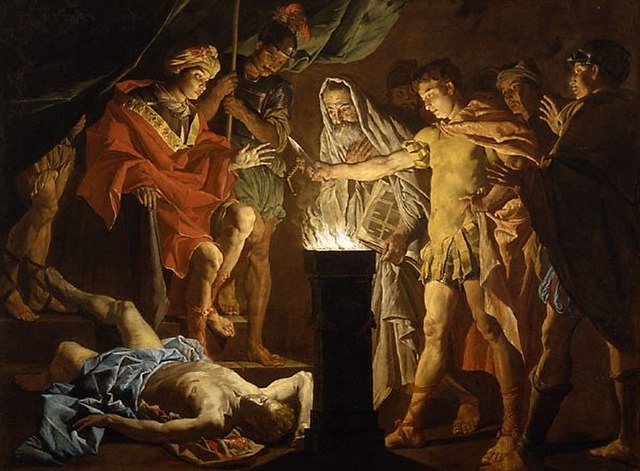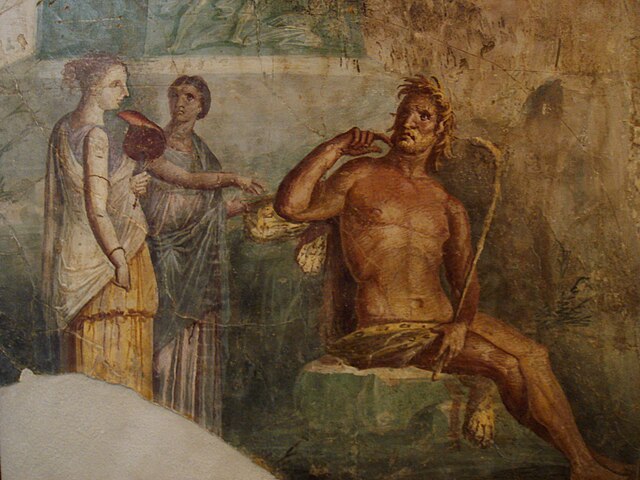Latinus was a figure both in Greek and Roman mythology. He is often associated with the heroes of the Trojan War, namely Odysseus and Aeneas. Although his appearance in the Aeneid is irreconcilable with his appearance in Greek mythology, the two pictures are not so different that he cannot be seen as one character.
Latinus from Guillaume Rouillé's Promptuarii Iconum Insigniorum
Aeneas at the Court of Latinus by Ferdinand Bol; Rijksmuseum Amsterdam
Roman mythology is the body of myths of ancient Rome as represented in the literature and visual arts of the Romans. One of a wide variety of genres of Roman folklore, Roman mythology may also refer to the modern study of these representations, and to the subject matter as represented in the literature and art of other cultures in any period. Roman mythology draws from the mythology of the Italic peoples and ultimately from Proto-Indo-European mythology.
Romulus and Remus, the Lupercal, Father Tiber, and the Palatine on a relief from a pedestal dating to the reign of Trajan (AD 98–117)
In this wall painting from Pompeii, Venus looks on while the physician Iapyx tends to the wound of her son, Aeneas; the tearful boy is her grandson Ascanius, also known as Iulus, legendary ancestor[citation needed] of Julius Caesar and the Julio-Claudian dynasty
Mucius Scaevola in the Presence of Lars Porsenna (early 1640s) by Matthias Stom
Polyphemus hears of the arrival of Galatea; ancient Roman fresco painted in the "Fourth Style" of Pompeii (45–79 AD)






